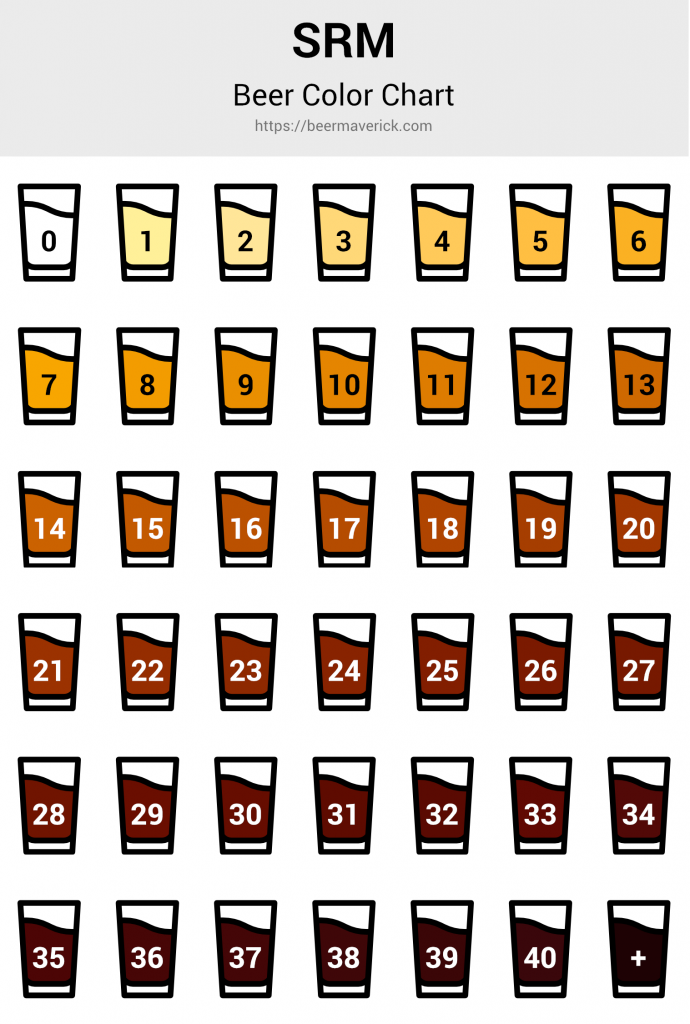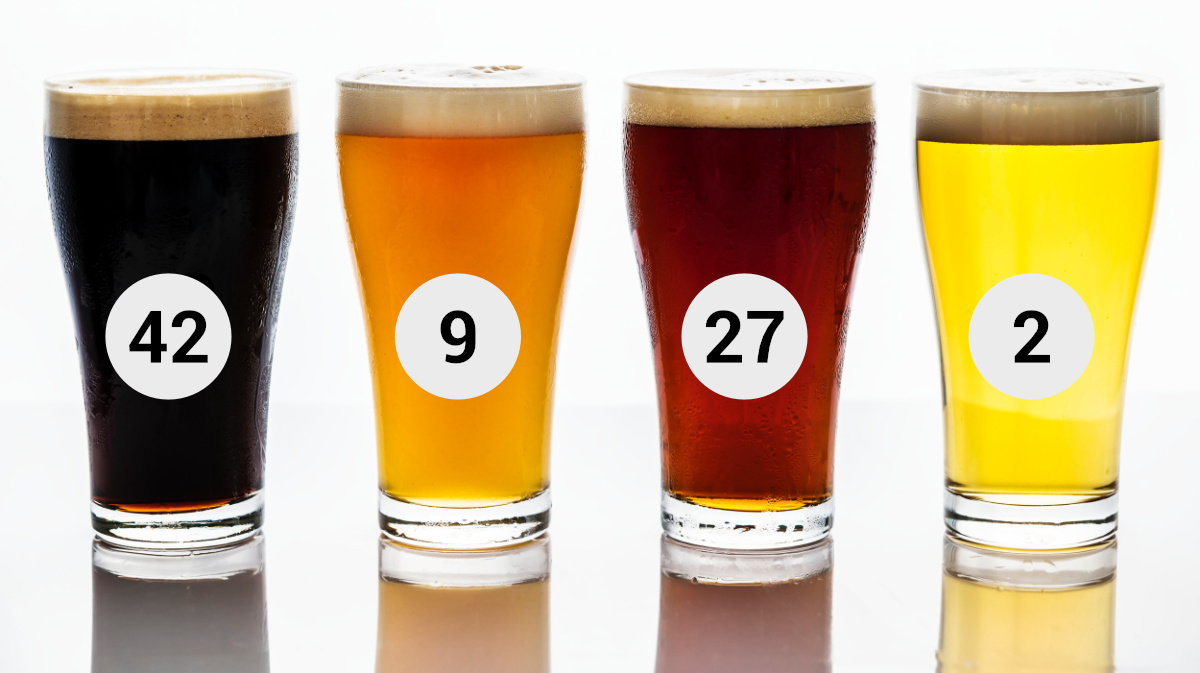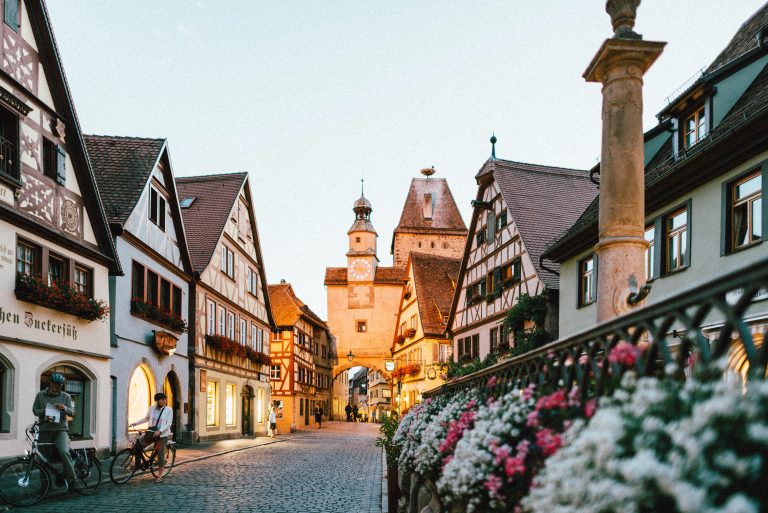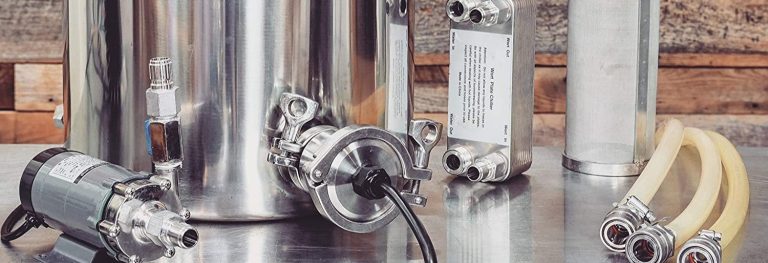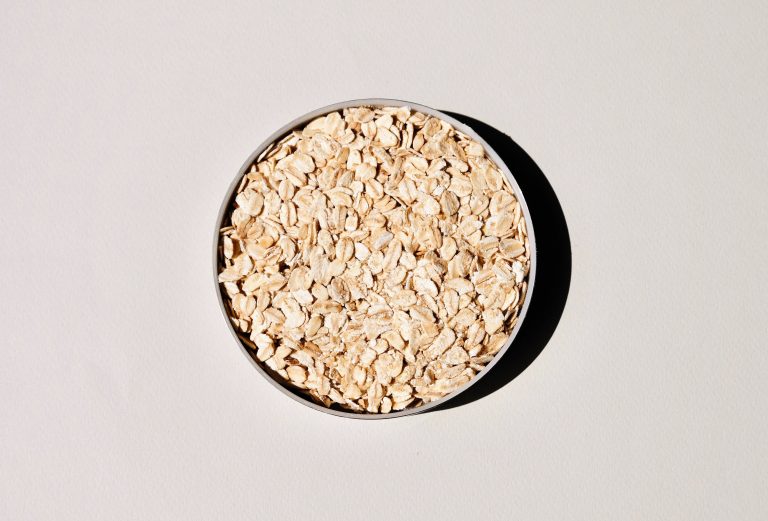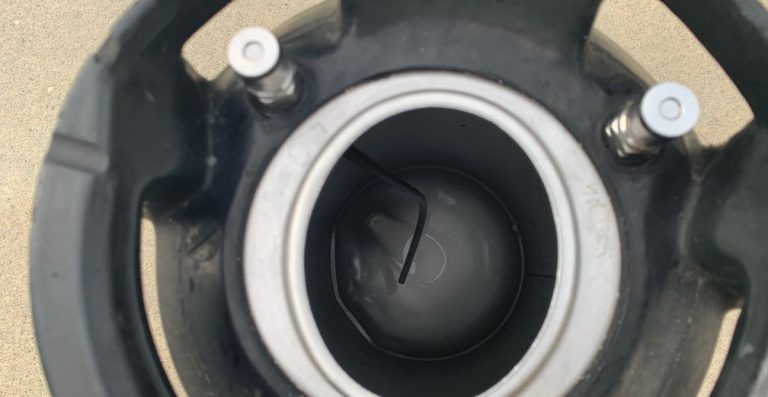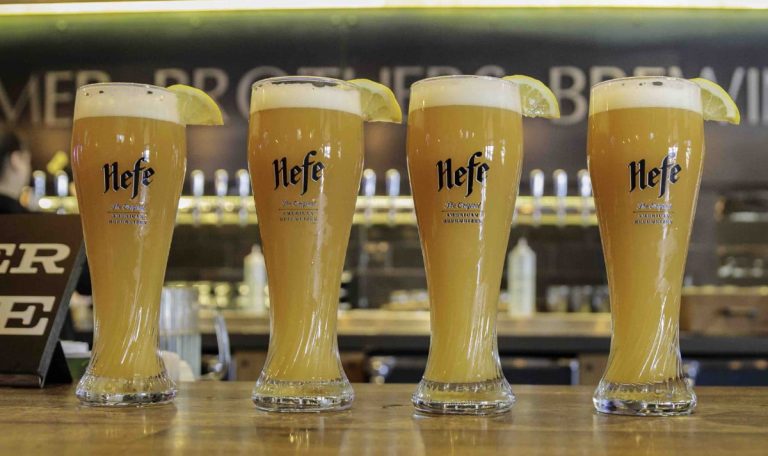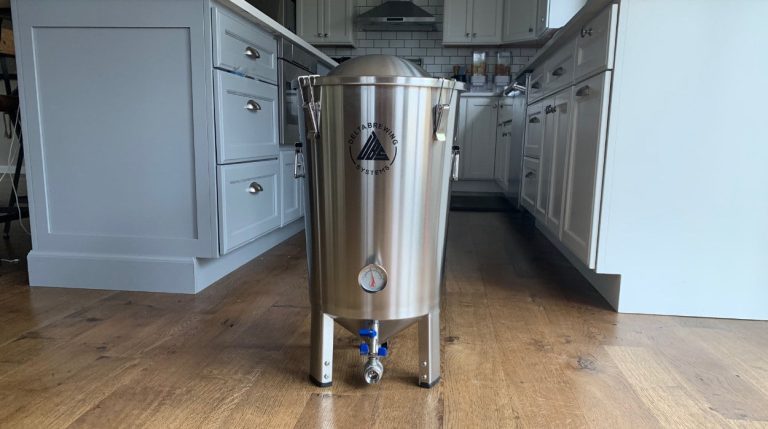What is the SRM & Beer Color Scale?
Most people that drink beer don’t think twice about the exact color of beer they drink. They know if they like dark or light beers, but how light or how dark is unimportant to them. Brewers, however, take these colors very seriously.
Every item added to your beer will change its color slightly. Since grains are by the largest percentage, it is expected that they have the most impact on your final beer’s color.
Most grains in their unmalted and unroasted form would impart just a pale yellow color to your beer. As grains are roasted at higher temperatures for longer times, the color they add darkens considerably.
There are a few different methods this beer color is measured: SRM, EBC, Lovibond and MCU. They all have their uses in homebrewing, so lets take a look at each of them.
Conversion Calculators: Beer & Grain Color Calculators
What is Standard Reference Method (SRM)?
The most common value used in the US to measure beer’s color is the Standard Reference Method, or SRM scale for short. It was developed by the American Society of Brewing Chemists in 1950 as the scientific standard for identifying beer color. It is used in the US and abroad for measuring a beer’s specific color as well as the color each individual grain adds to it. SRM is calculated in laboratories using specialized equipment by passing light through a small sample of beer and recording the drop in intensity due to absorption.
What is Lovibond (°L)?
Lovibond is an older yet still common method for measuring the color of beer that was developed in 1885 by Joseph Williams Lovibond. It works by visually comparing a sample against a kit of reference colors with known values on the Lovibond scale. The Lovibond scale has mostly been replaced by the SRM and EBC methods in their respective countries for measuring beer color. However, it is still commonly used on packaging and online stores for reporting the color of malt and other brewing ingredients.
Are the SRM and Lovibond Scales the Same?
The degrees Lovibond for lighter colored beers is roughly the same as the Standard Reference Method (SRM) value, but this does not scale up for darker beers. The SRM scale is more of a derivative of the Lovibond method. It cuts out the subjectivity of choosing colors by relying on instrumentation instead.
| Lovibond | SRM | |
|---|---|---|
| Creation | Developed in 1885 by Joseph Lovibond. | Created in the 1950s by the American Society of Brewing Chemists. |
| Method | Compare the beer’s color to glass colored discs. | Measure the dimming of light through a sample of the beer. |
| Equipment Used | Glass discs and a Colorimeter (measures light getting through the solution) | Spectrophotometer (measures absorbed light) |
| Result Bias | Human Visual Assessment | Spectrophotometer Digital Output |
Converting from SRM to Lovibond and Vice Versa
The formula to convert standard SRM to degrees Lovibond is:Lovibond = (SRM + 0.6) / 1.35)
The reverse formula to convert degrees Lovibond to SRM is:SRM = ((Lovibond * 1.35) - 0.6)
What are Malt Color Units (MCU)?
Malt Color Units (MCU) is an easy way for brewers to calculate the approximate color expected in a given recipe with multiple grains and adjuncts. This is especially useful for recipes that you are making for the first time.
In order to calculate MCU of a recipe, the calculation is:MCU = ((Grain Weight Pounds * Grain Lovibond) / Volume Gallons)
The MCU value provides a fair color estimate for beers that are very pale in color or less than 10.5 SRM. At the low end of the SRM spectrum, MCU and SRM values close enough to use the different values interchangeably. However, because light absorbance is logarithmic and not linear, the Morey equation is needed for a better estimate of color for most beers.
Quick History Lesson: In 1995, Dan Morey wrote to the publication Brewing Techniques to propose a new way of calculating MCU values without using three different linear equations, which had been the preferred way up until then. His calculation known as the “Morey Equation” has since become standard in all brewing software.
Ok, anyway…back to the story. So the Morey equation to calculate SRM from MCU looks like this:SRM = (1.4922 * (MCU ^ 0.6859))
What is European Beer Color (EBC)?
The EBC method (European Beer Color) is the European equivalent standard to the SRM scale in Europe. Both SRM and EBC use very similar laboratory techniques to measure the beer color. Because of this similarity, SRM and EBC have an exact linear relationship to their values. In fact, the EBC value for a given grain is always a little less than double the SRM value.
In practice, the EBC color is approximately 1.97 times the SRM color:EBC = (1.97 * SRM)
The reverse calculation to convert EBC to SRM is:SRM = (EBC / 1.97)
Which is Better: SRM or Lovibond?
The SRM method is vastly preferred over Lovibond because the result is not subjective. The digital output from the Spectrophotometer is an objective value. However, Lovibond is still widely used by grain producers. In the example below, you’ll see that in order to estimate a beer’s color, you’ll need to use each grain’s Lovibond value.
What Factors Influence a Beer’s Color?
So we now know how beer color is determined, but what determines the color coming from the malts?
- Grain Roasting: The more roasted your malt is, the darker your beer will become. Even within specific classes of grains (i.e. Chocolate Malts or 2-Row) there will be a slight variation of grain colors.
- pH Levels: Mashes with higher pH levels in the water are linked to having darker beers. While this is more common during the mashing phase, it can impact your beer at all stages of brewing.
- Boil Length: Longer boil times allows for extracting more of the color in your mash. It also caramelizes your mash, making it darker.
- Yeast Strain: The yeast strain used in brewing a beer can also have impact on the color.
- Filtering: If you don’t filter your beer, any suspended particles will deflect the light more, causing it to have a darker color.
How to Calculate a Beer Recipe’s Color
Sometimes it is better to see it in a real-world example, so let’s take this grain bill of a 5 gallon Oatmeal Stout and calculate the final beer’s estimated SRM value using the Morey equation.
In this sample beer, we use three grains, ranging from the lighter 2-Row, to the very dark Chocolate Malt. We included the Lovibond value from each of the grain producer’s website and/or packaging.
| Amount | Grain | Lovibond (°L) |
|---|---|---|
| 10 lb. | 2-Row | 1.8 |
| 1.5 lb. | Oat Malt | 2.5 |
| 1.25 lb. | Chocolate Malt | 350 |
Ok, now that we have the grain bill, let’s calculate the MCU of each grain. As described above, you’ll need to multiply the weight of the grain with that specific grain’s Lovibond value. After dividing by the total volume of finished beer, you end up with the MCU value of each grain being used.
| Amount | Grain | Lovibond (°L) | Malt Color Units |
|---|---|---|---|
| 10 lb. | 2-Row | 1.8 | (10 lb. x 1.8°L) / 5 gal = 3.6 MCU |
| 1.5 lb. | Oat Malt | 2.5 | (1.5 lb. x 2.5°L) / 5 gal = 0.75 MCU |
| 1.25 lb. | Chocolate Malt | 350 | (1.25 lb. x 350°L) / 5 gal = 87.5 MCU |
| Total | 91.85 MCU |
Next, add all the MCU values together (since they all get mashed together). This comes out to 91.85 MCU.
Finally, we apply the Morey equation to the recipe’s total MCU value:1.4922 * (91.85 MCU ^ 0.6859) = 33.136225 SRM
For the final color of the finished beer, find 33 or 34 on the SRM color chart we’ve created below.
Common Beer Styles & Their SRM Color Ranges
Certain beer styles have common SRM ranges that their color should fall within. We’ve selected a handful of the most common beer styles and listed the SRM color ranges they are typically brewed at. Many of these ranges can be selected with a simple visual comparison, and shouldn’t need all the math we described above.
The common range of the SRM scale is 1 to 80. Light beers are at or near SRM number 1, while dark beers like stouts and porters have a much higher value. However, most places will only list the darkest of beers around 40. This is due to the limitation of your eye to discern differences in the shades of black. A very dark brown beer is almost indistinguishable to a solid black one.
| Color | Color Name | SRM Range | Styles |
|---|---|---|---|
| Pale Straw | 2-4 | Light Beer including Pale/Lite Lager, Pilsner, Berliner Weisse, Witbier, New England IPA | |
| Straw | 3-6 | Maibock (Helles), Blonde Ale, California Common, Kolsch, Cream Ale | |
| Pale Gold | 4-8 | Weissbier, Lambic, Belgian Tripel | |
| Deep Gold | 6-12 | India Pale Ale (IPA), American Pale Ale | |
| Pale Amber | 8-16 | Saison, English Pale Ale, Irish Red Ale | |
| Medium Amber | 10-20 | English Bitter (ESB), Belgian Dubbel | |
| Deep Amber | 13-26 | Double IPA, Biere de Garde, Altbier, Barleywine. Scotch Ale | |
| Amber Brown | 17-33 | Amber Ale, Vienna Lager, Dark Lager, Marzen | |
| Brown | 20-39 | Bock, Dunkelweizen, Brown Ale, Brown Porter | |
| Ruby Brown | 24-47 | Robust Porter, Dopplebock, Irish Dry Stout, Oatmeal Stout | |
| Deep Brown | 29-57 | American Stout | |
| Black | 35-79 | Russian Imperial Stout |
Printable SRM Color Chart
Beer Maverick has created a chart that will show the expected beer colors based on the SRM values as defined in the above scale. This SRM chart can be printed or saved off as needed.
Conversion Calculators: Beer & Grain Color Calculators
